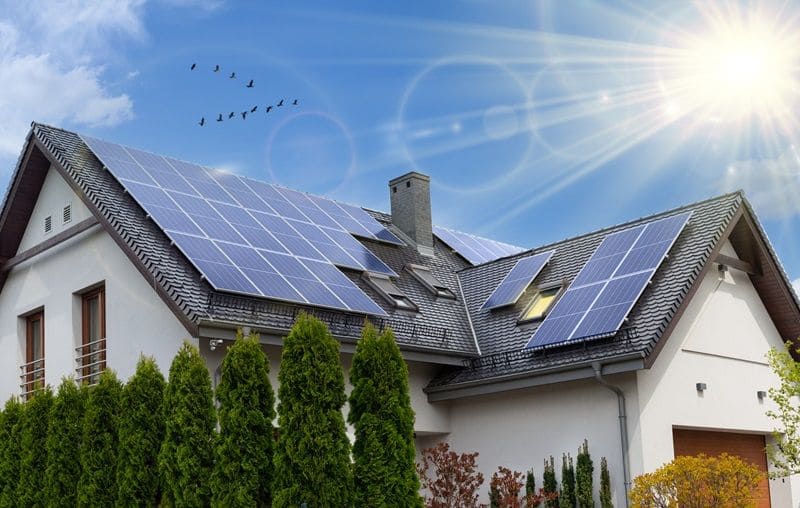“Solar panels!” Almost everyone has heard the term today. They are no longer strange or rare. From cities to small towns, they are seen on rooftops everywhere. The reason is simple. They turn sunlight into power. This power can run lights, fans, and even big machines in a home. People like them because they cut down electricity bills. They also help the planet by using clean energy instead of fuel. Many families are now asking if they should install solar panels. It is not just about saving money. It is also about planning for the future. This guide will explain how to choose the right solar panels for home and avoid costly mistakes. So, read on!
Know the Home’s Power Use
Choosing solar panels for home without knowing the power use is like buying shoes without checking the size. It might not fit the needs. Every home uses power differently, so it is important to measure it first. The easiest way is by reading old bills and thinking about daily habits.
Things to check before buying solar panels for home:
- Bills over 12 months: See which months have higher numbers, like summer for AC.
- Appliances: A home with a microwave, water heater, and two fridges uses more power.
- Upcoming changes: A new air conditioner or washing machine can raise power needs.
- Household size: More family members often means more lights, chargers, and electronics
Learn About Panel Types
There are different types of solar panels, but the two most common types used in homes are monocrystalline and polycrystalline. Knowing the difference between these two can help you choose the right solar panel for your home. They differ in looks, working, and cost. To understand how to make the choice better, let us look at the differences between the two.
The difference between monocrystalline and polycrystalline panels is stated in the table below:
| Feature | Monocrystalline Panels | Polycrystalline Panels |
| Color | Dark black or dark grey cells | Blue-tinted cells |
| Efficiency | Higher efficiency/makes more power per panel | Lower efficiency, needs more panels to make the same power |
| Space Needed | Takes less space for the same power | Needs more space for the same power |
| Cost | More expensive | Cheaper |
| Best For | Small roofs or where space is limited | Large roofs and lower budgets |
Check Panel Efficiency
Solar panels have two key numbers to check: the output rating and efficiency. The output rating is like a car’s engine size — it shows the maximum power the panel can make in perfect sunlight. Efficiency shows how well the panel uses that sunlight. A panel with high efficiency can make the same power as another but take up less space.
Things to know:
- Output rating is usually 250–400 watts.
- Higher wattage = more power from one panel.
- Efficiency is usually 15–22%.
- Higher efficiency = smaller panels for the same power.
- Best for small roofs: Choose high-efficiency panels.
Look at the Cost
Money matters when choosing solar panels for home. Cheaper panels may look like a good deal but might not last as long. Better-quality panels cost more at first but can save money later. Think about all the costs, not just buying the panels, so you don’t get any surprises later.
Things to check:
- Decide how much you want to spend.
- Compare a few different brands.
- Ask how long the warranty is.
- See how much power it gives for the price.
- Work out how much power you use daily.
- Get quotes from more than one installer.
- Ask if the price includes support later.
- Check if you’ll need upgrades in the future.
- Look for sales or discounts.
- Read reviews from other buyers.
Consider the Size of the Panel
Solar panels for home generally come in two main sizes, 72-cell and 60-cell. The cell refers to the small piece that collects sunlight. A 72-cell panel is bigger and it produces more electricity per panel. It works best for large open areas such as commercial roofs. A 60-cell panel, on the other hand, is shorter and fits better in small spaces, whereas large panels would not fit well. If your roof space is limited, 60-cell panels might be better, even if you need more of them. If space is not a constraint, 72 cell panels can make the system more efficient and may help lower the cost over time.
Check the Warranty
One major aspect that you should keep in mind before buying solar panels for home is the warranty the company provides. A good company will provide you a long warranty, which is about 25 to 30 years. This is a long time to save money and get free power from the sun.
Key things to remember when buying solar panels for home:
- Warranty length: The longer, the better (look for 25–30 years).
- Performance warranty: Guarantees your panel will still produce most of its power over time, even as it slowly loses efficiency.
- Product warranty: Covers problems with materials or build quality.
- What’s included: Check if labour or transport costs are covered.
- Reputation of the brand: Strong warranties usually come from trusted manufacturers.
- After warranty life: Good panels can keep working even after coverage ends.
- No hidden limits: Make sure there are no small-print conditions that reduce coverage
Conclusion
Now that you know all the basics needed for choosing the right solar panels for home, switching to solar should be an easy deal. When you are thorough with the basics, you make smarter choices that bring in savings while also helping the planet. A little information now can lead to a brighter, cleaner, and more rewarding future.




Be First to Comment